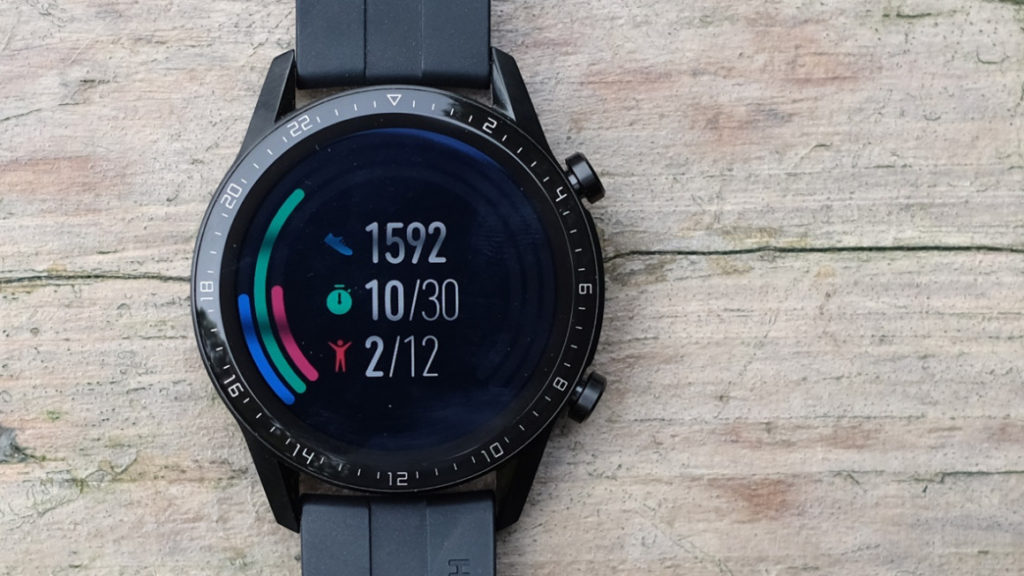We’re in the golden age of technology — not just in highly advanced, biomechanical equipment, but also in portable tech that can track specific metrics as you’re working out.
More specifically, we’re talking smartwatches. (Who doesn’t love a good metric-tracking system strapped right to their wrist?)
Smartwatch tracking capabilities have grown more robust as their popularity has increased. There’s a wide array of metrics that can help gauge different aspects of your training: heart rate, number of steps, calories burned, floors climbed, distance traveled, time active… the list goes on (and the running watches get even more specific!).
The thing is, many people know these tracking metrics exist, but they don’t quite know how to leverage them for maximal training benefit. (Which is to no fault of their own; it’s not the most common knowledge to use your number of steps as a means of optimizing your running form.)
But! That’s what this blog is for: read on to learn how these easy-to-track metrics can provide more insight than we give them credit for.
#1. Prevent Injury
One of the most common features of just about any smartwatch is the ability to count steps — which, conveniently, is an easy metric to help prevent injury in the long-term.
To clarify, we don’t mean the total amount of steps you take for every run; that lump of a metric doesn’t provide much insight in the context of effective training. Rather, we mean the number of steps you take in a given minute, otherwise referred to as your cadence.
That’s right: measuring your step count can actually help with injury prevention!

We won’t go into too much detail here, but the basic gist is that keeping your cadence within a specific range will ultimately lead to more ideal running form. Taking more steps in a minute means your legs have to turn over faster, and this keeps your leading leg from reaching too far out in front of you (also known as overstride).
Preventing overstride allows that leading leg to land underneath your center of gravity and ensures that the right parts of your body — namely your muscles — are absorbing the shock, as opposed to other internal structures like your bones, tendons, or ligaments.
Most research suggests that the ideal range for cadence lands somewhere between 170-180 steps per minute. (There’s a bit more nuance to what “ideal cadence” actually means, but you can read about that here.)
So wrap that smartwatch around your wrist and pull up that trusty cadence tracker! Once you know where you’re currently at, take the time to read up on how to improve your cadence over time. (And don’t forget those tunes to help you run to the right rhythm!)
#2. Train Based on Effort
Most people default to tracking their runs via time or distance, since both metrics are easy to track and are highly accessible. However, focusing solely on minutes and miles won’t yield the most accurate results — what runners often benefit from is learning how to train based on their level of effort, rather than the time or distance it takes to complete a workout.
Consider hill running: the rate at which you run uphill versus downhill is extremely different, yet many runners get caught up in trying to maintain the same pace across both inclines. Pushing yourself to run at one set pace (or within a set time limit) can put your body under a lot of strain, leading to quicker fatigue and a higher potential for injury.
Plus, it’s important to remember that no athlete can hit their paces every single time. The ability to perform at your best is influenced by plenty of external factors; you may be more stressed one day, or you got less sleep compared to yesterday, or it might just be that that particular training day is just harder than it was last time. If your only goal is to hit a set pace with every workout, you’re placing yourself under a LOT of pressure to hit an unrealistic standard. (Which not only puts you at risk of injury or exhaustion, but also leads to more frustration and discouragement.)

But! There’s an easy solution to sidestep this common pitfall: use that smartwatch to track your effort rather than time or pacing alone.
Maintaining a steady heart rate throughout a run can be a good guide for consistent effort (though, like any other metric, focusing on heart rate alone won’t be as insightful as a combination of factors). With some more advanced wearable technology like the Stryd footpod, you can use the more specific “power tracking” feature. In short, this metric measures both your pace and speed to assess how much effort your body’s putting into different running intensities.
(But remember: your smartwatch serves as a good guideline for training based on effort. It may still be wrong, so if you feel like your workout is HARD, listen to your body! You know your body best.)
#3. Manage Your Training Load (to Prevent Overtraining)
Smartwatches also open up plenty of opportunity to prevent the infamous habit of overtraining. Overtraining often falls under the guise of being a highly ambitious athlete that tends to push themselves to the limit, but there can be a lot of room for error buried in that mentality.
Don’t get us wrong; being ambitious and pushing your limits isn’t something to shy away from. It’s just not something your body can handle all the time. Learning how to keep that ambition within healthy training boundaries is vital for the longevity of your running; and that’s exactly where your smartwatch metrics come into play.

Most wearables will track a variety of factors: how long you run, how far, how fast, how intensely, etc. Having all that information right at your fingertips is a great way to measure your current level of fitness, which is especially important to know if you’re trying to keep tabs on any inconsistencies in how your body responds to different training intensities.
For instance, certain metrics like resting heart rate or sleep quality may provide insight into overtraining symptoms. If you find that your resting heart rate is higher than usual, or your sleep quality has worsened or become less consistent, those may be key indicators that you’ve been overtraining for some time.
(Now, if you’re interested in learning more about the specifics of overtraining, that’s where working with a running specialist can be an invaluable experience. With their expertise, you could better decipher what might be contributing to that “too muchness” of your training workload.)
#4. Take a Break from Metrics
This one is going to sound a little counterintuitive, but: one benefit to using a smartwatch is to choose not to use it every once in a while.
Focusing on metrics and measurable progress is a fantastic habit to keep, but it can also be easy to get too caught up in the details. The last thing you want to do is get consumed by hitting the numbers with every workout; that’s likely to cause more stress or frustration than a sense of productivity and enjoyment.

Having metrics at-the-ready is super useful, but remember: good things come in moderation! Allow yourself to lace up your shoes and hone in on the feeling of running. Check in with yourself and appreciate your body and how it goes through the motions (then you can dial back into your metrics at your next workout).
So, as you’re learning to leverage those handy dandy metrics, make sure to allot an occasional run or two where you aren’t constantly checking the numbers.
#5. Keep Your Slow Runs Actually Slow
Now, many runners focus on using their metrics to get faster and more efficient in their running — but they can be just as useful to make sure you’re going slow enough, too.
We know, we know: running slow doesn’t sound productive. But that’s that ambitious, warrior mentality kicking in again. A well-rounded training plan includes plenty of easy runs, primarily for the purpose of maintaining a steady training mileage while also giving your body some much-needed recovery time.

The ironic part is that easy runs are often trickier to execute. Although pretty much every other workout is more difficult in terms of intensity and speed, easy runs present a unique challenge for runners because it feels counterproductive to run slow. Or, when they do run at an easy pace, they start feeling good and want to push themselves harder.
If that sounds like you, turn to the smartwatch!
Instead of solely using your metrics to hit higher goals, you can also use them to keep your running in check. Keep your pace and mileage within a specific range to ensure that you aren’t working your body too hard, as tempting as it may be to do otherwise. Remember that those recovery runs are vital for your body to stay functional and injury-free. (It’s just as important to run slow as it is to run fast!)
Watch that Watchface!
And there you have it: 5 simple ways to leverage your smartwatch for better and safer training.
With rapidly developing technology, your everyday runner has access to a plethora of metrics ready at the fingertips, and there’s no reason that information should go to waste! Take the time to learn what different metrics mean, not just in definition, but also in the context of your running form and performance.
Then, use that knowledge to empower your training, that way you KNOW your hard work is being invested in optimal running.
So gear up, runners — get to tracking!

